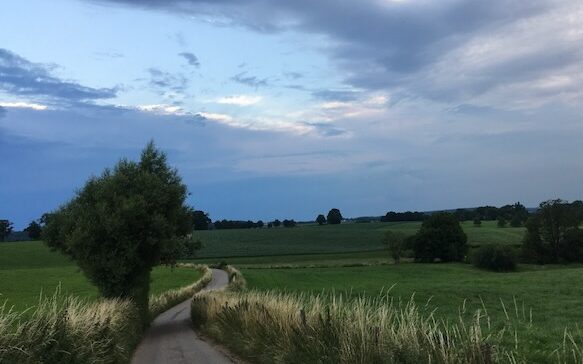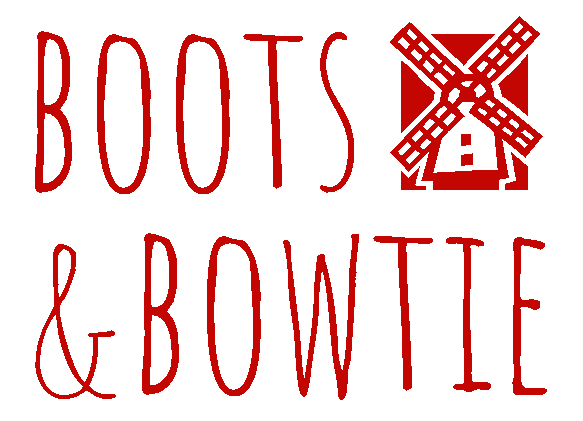(not a rant, more a musing)

In the largely rural south of the Dutch province of Limburg near Maastricht, centuries-old half-timbered buildings, former watermills, castles, and massive stone farmhouses nestle among the rolling hills. Charming “hollow ways” – roads that began in Roman times as cart tracks and have sunk over time, sometimes by a couple of meters – make it seem like you’re walking through a canyon. There are leafy forests, there are views, there are small breweries. Things are village-scale and cozy. The hills go up to about 300 meters high, an altitude which can make us urban flatland dwellers feel we’re on the set of a Dutch remake of “The Sound of Music.”
There’s a general feeling in the rest of the country that in South Limburg, they haven’t gone for broke modernizing for the sake of modernizing the way they have up north. The pace is slower, and there’s also a joie de vivre that we feel is related to its being predominantly Catholic. (In a nutshell, unlike with Protestantism, you can sin as long as you confess and acknowledge it; your god understands that screwing up is part of being human and he’s willing to give you another chance. Taken to the collective level, this state of grace becomes a phenomenon such as Carnival, where you go wild with excess before giving it up for Lent.) Small restaurants and cafés, with names in local (and sometimes unpronounceable) dialect that mean roughly “our place”, proudly serve traditional food – often with a new twist, but there’s still the nod, or the wink, that connects it to its forebears. Old arts are being revived, and every time we go there we find there’s a new artisan baker, brewer, vegetable pickler, cheesemaker, distiller – you name it.
We’ve done a fair amount of exploring this area on foot, combining as we do a scenic walk with some culinary aspect, and there is plenty of both here. We’ve found some amazing walks, like one past a winery through hilly forests to a restaurant in the middle of the woods, where you even have to hike a bit from the parking lot. Another goes through a lush river valley to a delightful restaurant just over the Belgian border, and in summer we can walk to dinner there and get back to our hotel while it’s still light outside.

Over time, we started to notice that the fields we passed were predominantly potatoes, corn, and sugar beets. Most of the spuds become French fries (chips for the Brits). In Europe, corn is grown almost exclusively as livestock feed. The beets will be refined into sugar. By far, most of the farmland is producing what will turn into junk food (OK, meat is nutritious, but there are better ways to raise it than on corn, which they as grazers are not designed to digest). The exceptions were conspicuous in their rarity; we’d point out wheat, barley, the brilliant yellow mustard and rapeseed, sunflowers, here and there a vineyard… Where were the fields of waving barley for all the beer? The flour for the pancakes, the orchards for all the apple pies? Where, we wondered, do they grow those traditional things we come here to consume?
We realized that behind the scenes of our picturesque vacation paradise, agribusiness-as-usual is humming away. (But the bees, essential pollinators for many plants including food crops, are sadly not.) The fields are monocultures; herbicides keep them free of any wildflowers or other plants, and pesticides kill off many other insects besides the target “pest” species. Most animals are kept by the thousands in windowless barns. Another reason the term “factory farming” is so apt is that it can be tremendously noisy in the countryside, but it’s mostly from machinery. You might say there’s more mowing going on than mooing. It can also be smelly in a nasty chemical way that is far from the kind-of-pleasant smell of manure from animals that eat real grass.
Most people in the Netherlands are obsessed with innovation, and farmers are no exception. They’re proud of the efficiency of their “enterprise” and there may even be a sign out in the field boasting about feeding future generations. The evidence is piling up that much of this practice is not sustainable in the long term. It’s killing off insects, the birds that eat them, and exhausting the soil, just to begin with. Ecologists will tell you there is more biodiversity in Dutch cities than in the countryside now.
The traditional look of South Limburg’s half-timbered houses and cozy cafes and the abundance of local products on the menus gave us the impression that farming there would be different somehow. Realizing the authenticity was an illusion – a half-timbered house doesn’t mean its inhabitants live in the past, they just live in an old house – made the disconnect more jarring. And then the realization that we were willing to go along with it, to have believed we were in this fairy tale, was even more disconcerting. But no one there is deliberately trying to pull the wool over our eyes. It’s not as if the captains of agribusiness all conspired to set up cozy little cafes everywhere to distract us from their unsavory industrial farming practices. In fact, some wonderful enterprising people there are trying to make a difference. Our mission is to find them and support them!
Hopefully, the apples in our next pie will have come from not too far away, as will the flour, butter, sugar (maybe from those beets!), and the cream, if you go for that. The coffee we order with it will be from far-off lands, as it always has been. Not to get too serious, but we can be mindful about what we’re ordering and still have a good time. We just need to ask a few questions (“It’s January – why are strawberries on the menu?”) and weigh the options sometimes.
From wide-eyed wonder at a scenic culinary wonderland, to suspicion of the “theme park with a dark side”, our position has evolved. We’ve come to see the region as having some great traditional food and drink, some beautiful natural scenery, and a fair amount of peace and quiet. It has lots of the things we like, and less of some things we don’t. It’s a place we enjoy coming to and exploring as well as revisiting familiar places. The sense of enjoying life is strong there and so, rid of our illusions, we’ll continue to do the same there, and we recommend you check it out too.
